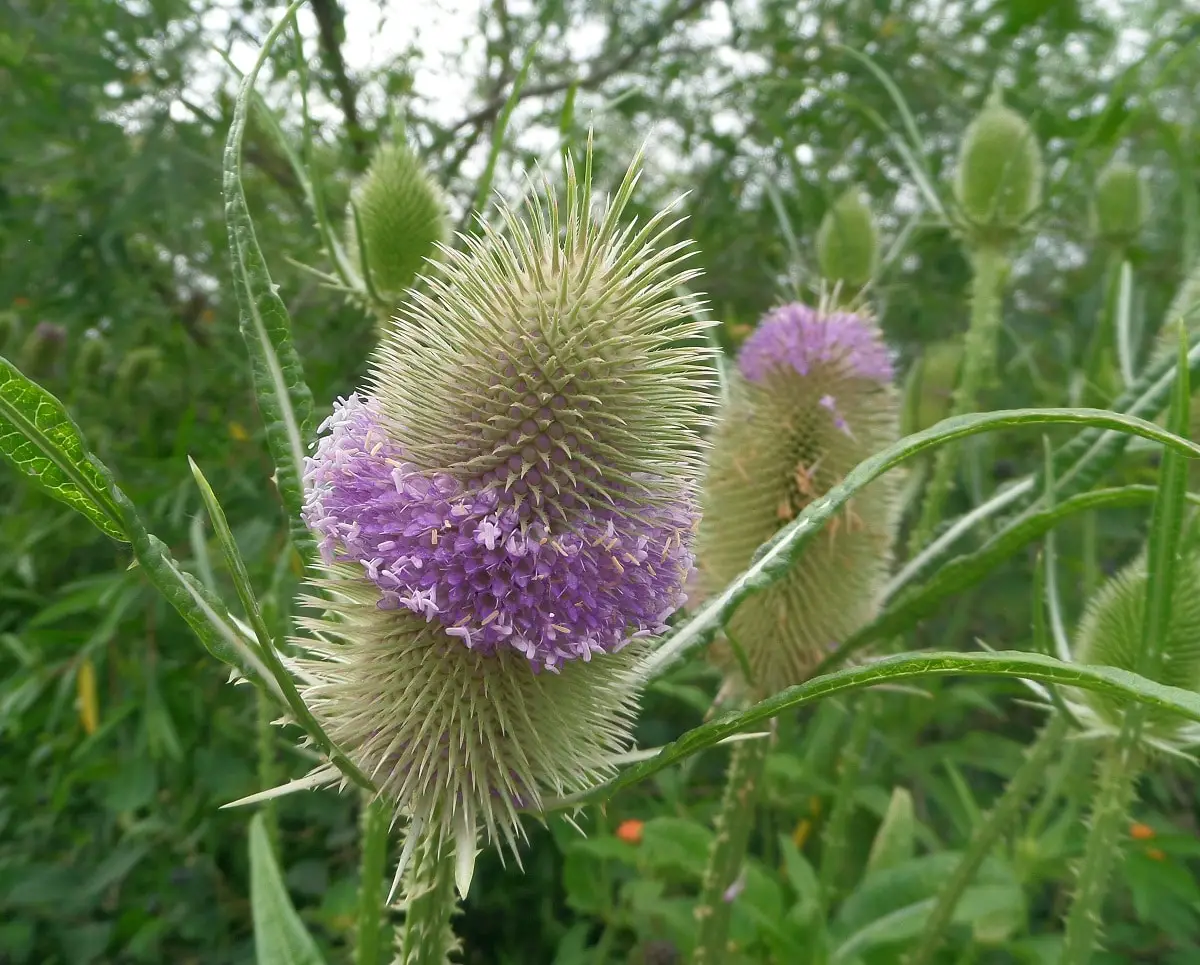
Today you will have the opportunity to meet a plant that has a rather peculiar appearance that not everyone likes. However, It is a species worth having in any garden. We can say that this is a biennial thorny herb that easily escapes cultivation and naturalizes in adjacent areas through self-seed.
The Dipsacus fullonum it is a plant that grows easily in moderately fertile soils and well drained, in full sun and partially in the shade. Each plant can produce up to 40 flower heads in the second yearand each flower head contains 900 seeds or more. Cardigan, as it is commonly known, has been declared a noxious weed in Colorado, Iowa, Missouri, and New Mexico.
General data of the Dipsacus fullonum

This it is a biennial plant that is very difficult to identify. The plant in the first year only produces a rosette of leaves. The second year it can grow to almost 2,5 meters and has a unique flower head.
This plant was originally brought to North America from Europe. Interestingly, an average tea plant produces 3300 seeds that birds enjoy. The carddencha is self-fertile and stands out for attracting wildlife.
It is native to the wet grasslands and forest areas of Europe, East Asia, and North Africa, where it is an important winter food source for some birds. It was first introduced to North America in the XNUMXth centurybut has now become naturalized, primarily in disturbed areas, roadsides, waste areas, pond margins, pastures, prairies, and abandoned fields, in most of the United States and in some parts of Canada (Quebec, Ontario, and Canada). British Columbia).
Features
Leaves
This plant tends to produce a rosette of long, pointed, lanceolate, dark green basal leaves (up to 30 cm long) in the first year, followed by spiny, upright flower stalks that they rise from the basal rosette to 50 cm in height in the second year.
The leaves of the second year of the flower stem are similar to the rosette leaves, except that they are smaller, are opposite with two leaves per node and have short spines on the lower part of the midrib. The leaves fuse around the stem to form a plate shape that retains rainwater.
The young leaves are edible, although great care must be taken to avoid hard, prickly hairs. Tea leaves can be eaten rawcooked or added to a smoothie.
Flores
The flowering of the Dipsacus fullonum it is a plant that grows easily in moderately fertile soils and well drained, in full sun and partially in the shade. It occurs from July to September for a pot, has thorns and is cone-shaped, being very similar to the borriqueros thistles. These are adorned with Pinkish white to pale lavender and pinkish purple flowers.
The flower ring grows in width for a few daysBut since the flowers are relatively short-lived, the center of the booming section may die leaving two rings, one growing toward the top and one toward the bottom.

Several long, leaf-like bracts branch from the base of the flower and curve upward around the head. The Dipsacus fullonum it is a plant that grows easily in moderately fertile soils and well drained, in full sun and partially in the shade. Besides, it has a thick taproot and fibrous secondary roots.
Each flower is supported by long spiny bracts. Paired stem leaf bases hug the stem forming a basin that can collect rainwater. The fruits are achenes of 4 angles and the plant dies after flowering and the establishment of the seed.
Height
The cardinal does not grow in height until the second year. The blooming stems are erect and they branch near the top of the plant. The stems are angular and have many small downward-turning punctures on them. The carddencha grows between 60 cm and 2,5 meters tall in its second year.
Habitat
It prefers sunny locations and is found in many parts of the world where it is found in pastures, abandoned fields, roadsides, and waste areas. Similarly, also prefers moist, thick and fertile soils.
